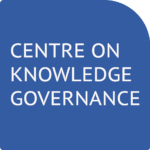Justifications for an Instrument on Copyright Limitations and Exceptions
by Aditya Gupta and Sean Flynn The mandate for working on an international instrument on limitations and exceptions (L&Es) at the World Intellectual property Organization (WIPO) is rooted in the principle of maintaining a “balance between the rights of authors and the larger public interest, particularly education, research and access to information,” as articulated in the Preamble to the 1996 WIPO Copyright Treaty (WCT). The issue has been on the WIPO agenda since 2004, driven initially by proposals from Chile and several other countries in Latin America, and subsequently supported strongly by the African Group. The formal mandate for continued work on L&Es—specifically for libraries and archives, education and research institutions, and ‘other disabilities’—stems from a 2012 recommendation from the General Assembly (WO/GA/41/14), which called for continuing discussions “to work towards an appropriate international legal instrument or instruments (whether model law, joint recommendation, treaty and/or other forms)”. This process was significantly accelerated when the African Group’s proposal for a Work Program on L&Es was adopted in 2023 (SCCR/43/8 REV), reaffirming the goal to move towards “the adoption of an appropriate international legal instrument or instruments on exceptions and limitations”, with subsequent drafts, such as SCCR/44/6 (November 2023), setting out detailed methodologies and processes intended to facilitate text-based negotiations on the subject. Below we summarise justifications for an international instrument on limitations and exceptions (L&Es) to copyright, and for expanded limitations and exceptions more generally. The justifications are taken from a review of academic literature. Academics have posited that such an instrument is necessary to counteract the existing “minimum protection approach” of international treaties, which often prioritizes copyright holders over public interest, access to knowledge, and competition and development concerns. To download or print this analysis, see the pdf version below. Benefits of International Harmonization Counterbalance to minimum protection approach; Promoting L&E reform. International copyright treaties have primarily followed a “minimum protection approach” with the result many (especially developing) countries reform laws to meet the evolving international landscape on copyright protection without updating limitations and exceptions. Following the 1996 Internet Treaties, for example, most countries have protections that cover digital works, but often lack the updates necessary to apply exceptions to digital uses. An instrument on L&E can help guide copyright reform to better recognize “the need to maintain a balance between the rights of authors and the larger public interest, particularly education, research and access to information, as reflected in the Berne Convention.” (WCT Preamble). A key example is the Marrakesh treaty, which has promoted extensive reform in exceptions for people with disabilities. (Geiger and Jütte 2024; Hilty et al. 2021; Longan 2023; Majekolagbe 2025) Defending positive reform An instrument on L&Es would help defend reform efforts against claims that broadening L&Es would violate the international three step test. (Asay 2021; Okediji and Hugenholtz 2008) Eliminating anticompetitive effects Harmonizing L&Es across international borders can help combat anticompetitive behavior. For example, firms have use inadequate copyright exceptions to inhibit generic pharmaceutical labeling, reverse engineering to create competing products, etc. (Okediji 2018; Okediji and Hugenholtz 2008) Enabling Cross-Border Use Harmonizing L&Es can help promote cross border uses of materials relying on exceptions, such as a research corpus, educational texts, contents of libraries and archives, etc. (Flynn et al. 2020; Trimble 2025) Benefits of More Open L&Es for Social and Economic Development Promoting ongoing authorship L&Es promote free expression and authorship that builds upon existing works for subsequent creations such as commentaries, biographies, critical reviews, satire and parody, and other transformations. (Hilty et al. 2021; Samuelson 2018; Yoo 2021) Promoting research (empirical) More open exceptions for research uses are associated with higher levels of academic production and publication, including of projects using computational research that requires making digital copies of whole works (aka text and data mining). (Flynn and Palmedo 2019; Handke, Guibault, and Vallbé 2021; Palmedo 2019) Supporting functions of public institutions L&Es enable institutions like libraries and archives to fulfill essential public functions, such as digitization, preservation, making replacement copies, and providing document delivery for research. (Lindsay and Greenleaf 2018; Majekolagbe 2025; Samuelson 2018) Promoting the Dissemination of Knowledge L&Es such as education and research exceptions enable wider dissemination of information through digital platforms, such as for online learning, sharing research files, etc., that can contribute to development and economic and social advancement. (Lindsay and Greenleaf 2018; Okediji 2018; Okediji and Hugenholtz 2008) Promoting Innovation and Competition L&Es foster commerce, competition, and innovation by limiting exclusive rights that might otherwise impede the development of derivative products and services such as interoperable software, recording and storage devices (from the VCR to the cloud), and search and indexing of webpages. (von Lohmann 2008; Samuelson 2018) Promoting Innovation (Empirical) More open user rights environments are associated with higher firm revenues in information industries, including software and computer systems design, and in complementary industries (e.g., ISPs, web hosts) by legally allowing consumers to copy and share content. This in turn promotes investments in new technological innovation (Flynn and Palmedo 2019; Palmedo 2021) Bibliography The pdf version follows below:





